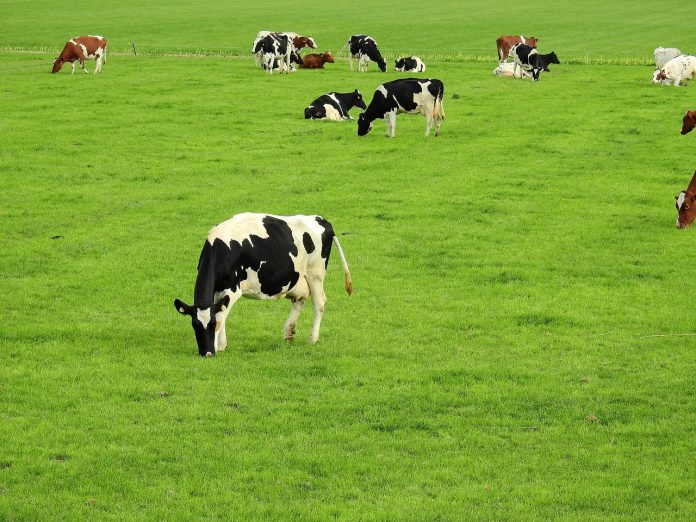Reclaimed surface mine land is a common sight for many of us in the southeastern portion of the state.
Essentially, these are areas which had topsoil removed before coal was mined from the surface down with big, earth-moving shovels like the Muskie Bucket. After mining was finished, the land was filled in, and the topsoil was reapplied to the surface.
Although mining activity created a sizable industry in the area, it also created large-scale disturbances that have impacted the environment in a variety of ways.
Take the disturbance of topsoil, for example. During the mining process, topsoil that had been settling and creating a micro-environment for thousands of years was removed and later replaced. This not only impacted the structural soil profile, but it also changed the biological activity, the organic matter content and the water filtration capabilities of the soil.
Despite the disturbance, livestock grazing and hay production are actually an incredible way to use reclaimed land. The land is already cleared, and grasses and legumes can grow on these disturbed sites while larger plants, like trees, may struggle to become established. Many farmers have been successfully raising livestock on this type of land for many years.
Special considerations
While driving to and from work, I pass by many pockets of reclaimed mine land which are now being grazed by cattle or harvested for hay. This piqued an interest for me, wondering if there are any special considerations or hazards to look out for if you decide to use reclaimed land for livestock production.
Drought
Since the topsoil has been disturbed, reclaimed land may have reduced water holding capacity. The organic matter in the soil — which is essential for water retention — has been jumbled around and can cause reclaimed land to dry out faster than undisturbed sites.
Reduced yield
Due to the drought issues mentioned above and other problems caused by soil disturbance, you may find that reclaimed land has lower yield, especially in the summer months. This can impact how long you can graze and how many animals the land can sustain.
Water quality
Mining activity in the region has also caused extreme impacts on water quality. Orange streams caused by acid-mine drainage is a common sight. These contaminated streams have a very low pH, often high levels of heavy metals and very low biological activity. In many cases, these streams are almost devoid of any life.
Where there are water quality issues, nearby plants may be negatively impacted. Abandoned mines can also cause contamination of ground water pockets, leading to issues when drilling private wells for livestock water sources or household use. If you have concerns about the quality of your water or your forages, you can have them tested.
A regular hay quality test may show signs of underlying issues if trace minerals are at abnormal levels. You can also send hay or fresh forage plants out for a more broad-spectrum test which will help narrow down any issues.
Additionally, you can have water sources tested to ensure you are providing a safe and healthy option for your animals. There are many lab testing services available.
Overall, it is important to note once again that farmers have made use of reclaimed land for livestock production for many years. If you are having issues with your land, though, and think it may be negatively impacting your animals, you may consider the information mentioned above.
If you need guidance or help finding a suitable company for hay, fresh forage or water testing, don’t hesitate to reach out to your local extension office.
(Jessica Burns is an Ohio State Extension educator in Vinton County. She can be reached at burns.1097@osu.edu or 740-596-5212.)













